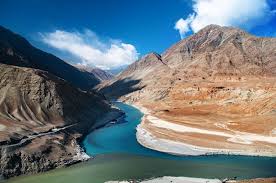JAMMU: The Ministry of Science and Technology in its annual report said that the government brought out a 35,000 year history of river erosion in Ladakh and identified hotspots of erosion and wide valleys that act buffer zones.
The report also mentions Dr Malik Abdul Wahid from National Institute of Technology (NIT) Srinagar among the achievers who exclusively worked on the marriage of material science and electrochemistry for sustainable energy.
According to the news agency—Kashmir News Observer (KNO), the Ministry of Science and Technology in the annual review report said that “Dr Malik Abdul Wahid from National Institute of Technology (NIT) Srinagar is a recipient of the INSPIRE Faculty award instituted by the Department of Science and Technology, Govt of India working in the area of energy research towards the marriage of material science and electrochemistry to develop sustainable energy and affordable energy sources.”
The Ministry said that his focus is mainly on electrodes and electrolyte material electrochemistry. “Along with his collaborators at IISER Pune, Dr Malik developed a Si-Phosphorene nano-composite material for efficient Si stabilization as an anode in Li-ion battery, which was published in the journal Sustainable Energy Fuels,” the report said.
“The obtained material delivers five times more capacity than carbon-based electrodes and can be fully charged in about 15 minutes,” it said.
About the achievements of the ministry of science and technology in the newly created union territory, Ladakh, the annual review the report said that Wadia Institute of Himalayan Geology (WIHG) reveals 35,000 year history of river erosion in Ladakh Himalayas.
“The study by the WIHG team will help to understand river-borne erosion and sedimentation,” the report said. “Scientists and students from Wadia Institute of Himalayan Geology (WIHG), an autonomous institute under the Department of Science &Technology, Govt. of India studied rivers in Ladakh Himalaya, bringing out 35,000 year history of river erosion and identified hotspots of erosion and wide valleys that act a buffer zones.”
The report said that “the study showed how rivers in drier Ladakh Himalaya operated in longer time scales and how they responded to varying climate, an understanding of water and sediment routing, which is crucial as the country gears up its infrastructure and develops smart cities.”
The report further revealed that the science and technology ministry conducted climate change research marked by impactful publications and centres of excellence in Himalayan universities.
“Three Centres of Excellence (CoE) were established in Himalayan Universities in Kashmir,” the report said.
The ministry also said that the year 2020 has been the ‘Year of Science’ when the best of humanity has shone through the gloom that descended upon us due to the COVID19 pandemic. “It is a matter of record that as the spread of the disease accelerated, so did the research efforts to mitigate this.”


